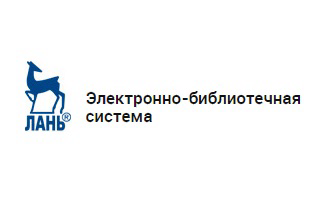DOI: 10.21440/0536-1028-2019-6-21-30
Karablin M. M., Guriev D. V., Prostov S. M., Lesin Iu. V. Automatic analysis of pit slope stability in clays of quaternary sediments. Izvestiya vysshikh uchebnykh zavedenii. Gornyi zhurnal = News of the Higher Institutions. Mining Journal. 2019; 6: 21–30. DOI: 10.21440/0536-1028-2019-6-21-30
Introduction. Preventing landslides of slopes formed by sand and clay of quaternary sediments with a thickness of 40–50 m is an essential task of opencast mining. Possessing significant stability at natural moisture content, rocks drop soil strength in water saturated condition. In some instances, it may cause disequilibrium in the marginal rock mass. The maintenance of slopes (pit edges, waste dumps, dams, mounds, etc.) stability is the most basic requirement imposed on mining enterprises today.
Research aim is to improve the accuracy of slopes stability analysis by means of automatic search of the most strained glide surface with the lowest value of slope stability safety factor, both at the design stage and at the stage of emergency control associated with slope stability violation.
Methodology. The method of analyzing slope stability in the main computational models, including models with low-angle concordant bedding of a natural plane of weakness. The algorithm was implemented by an analytical simulation method in Stable slope (Russ. Ustoichivyi bort) software package.
Results. Based on the data from slope stability analysis at a polymetallic mine in Altay krai, a graph of slope angle versus slope height in quaternary sediments has been built for various values of the angle of incidence for the contact “quaternary sediments–underlying bedrock”.
Summary. Slope design procedure involves making laborious polycyclic calculations associated with the selection of the resultant angles of slopes, which will provide stability, for the specified height, mine and geological conditions and physical-mechanical characteristics of the marginal rock mass. Automatic analysis with Stable slope software makes it possible to improve stable slopes parameters computational accuracy when designing mining, by means of an option of searching for the most strained glide surface. Further fundamental improvement of analysis accuracy is possible with 2D geological models of slopes substituted for 3D models with slope stability factor determination by the most critical area. Such 3D
models may be developed by geologic sections and geophysical sounding in the areas with abnormal density and water saturation. Besides, analysis accuracy may be improved if the model is developed as far as the real contour of mine profile, lithological types of rock, variability of physical-mechanical properties of rock are concerned.
Key words: ground slopes; stability; computational automation; safety factor; limiting equilibrium; back calculation; physical and mechanical properties of soils.
REFERENCES
1. Mukhametkaliev B. S., Kaliuzhnyi E. S., Siedina S. A., Abdibekov N. K. Geomechanical stabilization of pit slopes stability at the increasing depth. Gornyi zhurnal = Mining Journal. 2018; 4: 27–32. DOI: 10.17580/gzh.2018.04.05. (In Russ.)
2. Bakhaeva S. P. et al. Slope stability analysis at coal mines. Tomsk: Tomsk University Publishing;
2015. (In Russ.)
3. Starostina O. V., Dolgonosov V. N., Aliev S. B., Abueva E. V. Study of stability of the benches of the upper horizons of the stationary side of the “Bogatyr” open-pit mine. Ugol = Coal. 2019; January: 27–32. (In Russ.)
4. Cheng Y. M., Lau C. K. Slope stability analysis and stabilization. CRC Press Taylor & Francis Group, 2014.
5. Zhabko A. V. On problems and modern methods of evaluating the stability of slides on open mountain works. Problemy nedropolzovaniia = The Problems of Subsoil Use. 2018; 3: 96–107. (In Russ.)
6. Zhabko A. V. Theory of calculation of the stability of slopes and bases, slope stability in the field of tectonic, seismic and hydrostatic stresses. Izvestiya Uralskogo Gosudarstvennogo Gornogo Universiteta = News of the Ural State Mining University. 2016; 4 (44): 50–53. (In Russ.)
7. Kharisov T. F. Problem of assessment of the safety factor of the open-pit sides. Problemy nedropolzovaniia = The Problems of Subsoil Use. 2018; 3 (18): 108–118. (In Russ.)
8. Digvijay P. Salunkhe, Rupa N. Bartakke, Guruprasd Chvan, Pooja R. Kothavale. An overview on methods for slope stability analysis. International Journal of Engineering Research & Technology (IJERT). 2017; 3 (3): 528–535. DOI: 10.17577/IJERTV6IS030496. (In Russ.)
9. Tsirel S. V., Pavlovich A. A. Problems and development patterns of the methods of geomechanical substantiation of pit slopes parameters. Gornyi zhurnal = Mining Journal. 2017; 7: 39–45. DOI: 10.17580/gzh.2017.07.07. (In Russ.)
10. Baltiyeva A. A., Altayeva A. A., Sedina S. A., Shamganova L. S., Tulebayev K. K. Sarbai mining open pit stable state edges geomechanical monitoring using software Usto4du. Proc. of the 16th Int. Multidisciplinary Sci. GeoConf. (SGEM 2016). New York: Curran Associates. 2016; 2; 2: 525–530.
11. Schlotfeldt P., Elmo D., Panton B. Overhanging rock slope by design: an integrated approach using rockmass strength characterisation, large-scale numerical modelling and limit equilibrium methods. Journal of Rock Mechanics and Geotechnical Engineering. 2018; 10 (1): 72–90.
12. Garmondyu E. Crusoe Jr., Cai Qing-xiang, Shu Ji-sen, Han Liu, Yamah J. Barvor. Effects of weak layer angle and thickness on the stability of rock slopes. Int. J. Min. & Geo-Eng. 2016; 50 (1).
13. Nesmeianov B. V., Nesmeianova Iu. B. Task solution for ensurance of slope stability based on the use of integrated strength index on loosening surfaces (given the presence of only longitudinal loosening planes in a sloping rocks mass – "flat" slope stability task solution). Marksheideriia i nedropolzovanie = Mine Surveying and Subsurface Use. 2016; 1: 32–35. (In Russ.)
14. Nesmeianov B. V., Nesmeianova Iu. B. Task solution for ensurance of slope stability based on the use of integrated strength index on loosening surfaces (given the presence of diversely oriented longitudinal, transverse and diagonal low-angle and steeply-pitching planes of weakness in a sloping rocks mass – "flat" slope stability task solution). Marksheideriia i nedropolzovanie = Mine Surveying and Subsurface Use. 2016; 2: 35–37. (In Russ.)
15. Zubkov V. V., Zubkova I. A. Comparative analysis of open pit slope stability. Marksheideriia i nedropolzovanie = Mine Surveying and Subsurface Use. 2017; 2: 50–52. (In Russ.)
Received 6 May 2019









